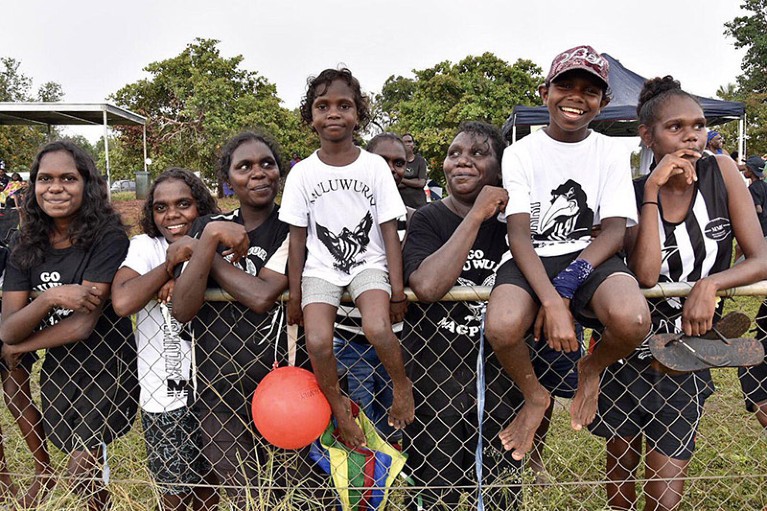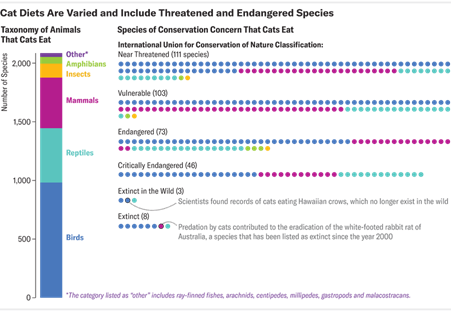Hello Nature readers, would you like to get this Briefing in your inbox free every day? Sign up here.

A group of Indigenous Australians watch a football match on the Tiwi Islands. Genomic analysis reveals that Indigenous Australians across the country have highly different genomes.Credit: Lucy Hughes Jones/AAP via Alamy
Indigenous Australians’ genomes are special
Australian Indigenous communities are some of the most genetically distinct people on the planet, with the highest rate of genetic variation outside groups in Africa. A new pair of studies sought permission from 159 Indigenous Australians to add their genetic data to global databases, and found that as much as 12% of structural variants — variations that are at least 50 base pairs in size — are unique to these communities. The information will help to provide better health care for Indigenous Australians and others across the world.
Reference: A Nature paper and another Nature paper
What Korea discovered about the Moon
One half of the Moon is more electrically conductive than the other, according to measurements from a South Korean spacecraft. The Korea Pathfinder Lunar Orbiter, nicknamed Danuri, has been studying the Moon since beginning its orbit last December. Scientists speculate that the far side of the Moon is hotter, or perhaps contains more water in its interior than does the near side.
Inside the minds of farm animals
Scientists are starting to reveal that livestock animals have complex, often-overlooked mental lives: pigs will free trapped companions, goats seem to selflessly help others to reach tasty treats and cows can be potty trained. Studies such as these could offer insights into the evolution of cognitive abilities and could change the way we treat farm animals. Getting funding for studies not aimed at improving milk or meat yields remains challenging, and so is housing herds of large animals — but at least they “don’t throw poo at you like great apes”, says animal-cognition researcher Christian Nawroth.
First glimpse at tyrannosaur’s last meal
Two small oviraptorosaurs — feathered dinosaurs with a toothless beak — were the last thing that a young Gorgosaurus libratus ate some 75 million years ago. The unique discovery of the tyrannosaurid’s fossilized stomach contents shows that the animal probably “dismembered the small prey, swallowed the legs and left the rest of the body out there” says palaeocologist and study co-author François Therrien. Perhaps this Gorgosaurus “didn’t want to be bothered having to cough up some feathers”, Therrien muses.
Scientific American | 6 min read
Reference: Science Advances paper
Infographic of the week

Free-ranging domestic cats have chomped on more than 2,000 species — including hundreds that are threatened, endangered or extinct. Researchers combed through more than 100 years of scientific papers, books and reports for mentions of animals eaten by Felis catus. “The study reaffirms that cats are the ultimate versatile generalist predator,” says wildlife ecologist Sarah Legge. “Cats continue to cause population decline, and more extinctions are inevitable if we don’t manage cats.” (Scientific American | 5 min read)
Reference: Nature Communications paper
Features & opinion
The true otherness of Neanderthals
In his new book, archaeologist Ludovic Slimak delves into the ‘soul’ of Neanderthals — the evidence for their artistic, ritual and symbolic natures. He questions whether others have gone too far in characterizing Homo neanderthalensis as the intellectual and creative cousins of Homo sapiens. And he casts doubt on fellow scientists who don’t have the perspective gained from doing decades of fieldwork, which he views as essential. The result is a book that is “absorbing, elegantly written and sometimes mischievously humorous, yet in places also frustratingly unbalanced”, writes archaeologist Rebecca Wragg Sykes.
Futures: Travels to the end of the Universe
A starfarer finds a space-puppy at the very edge of the Universe in the latest short story for Nature’s Futures series.
Five best science books this week
Andrew Robinson’s pick of the top five science books to read this week includes a peek behind the curtain of human consciousness, a look at US politics in a time of climate crisis and a parenting guide for baby artificial intelligences.
Podcast: Inhaled COVID vaccine shows promise
An experimental inhaled COVID-19 vaccine that boosts the immune response in the lungs has been shown to block infection in monkeys. The rhesus macaques (Macaca mulatta) in the study had already received a standard injection. Current vaccines used in people provide protection against severe disease — this result moves us closer to one that can block infection and stop onward transmission, too.
Subscribe to the Nature Podcast on Apple Podcasts, Google Podcasts or Spotify, or use the RSS feed.
